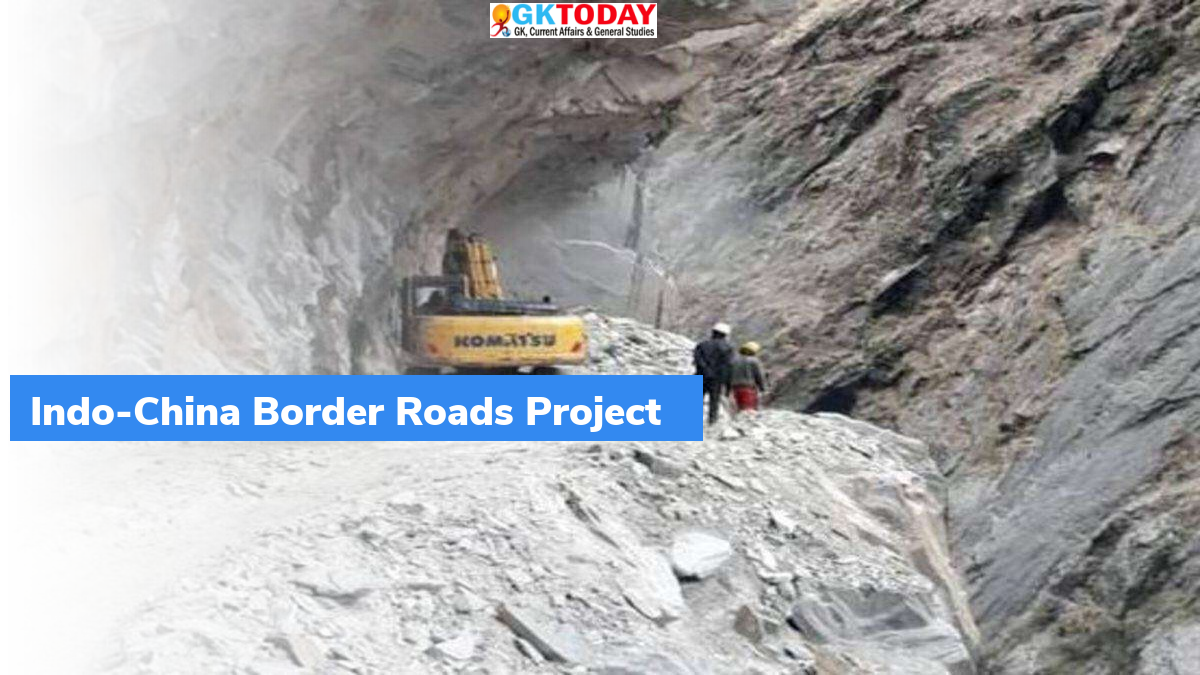Indo-China Border Roads Project
The Indo-China Border Roads (ICBR) project is a programme to develop infrastructure along the Sino-Indian borders. The ICBR project is the successor of Project HIMANK that was started in 1985 to construct border roads in Ladakh. India launched Indo-China Border Roads Project to catch up Chinese developments along the border. China has upgraded the infrastructure of Tibetan Autonomous region by constructing five air bases and 58000 kilometres of rail network.
About the Project
As of May 2021, the Government of India is constructing 10,023 kilometres of road under the project in two phases.
Funds to the project
The fund allocated for the project is from the Border Infrastructure and Management Fund. This fund is managed by the Ministry of Home Affairs. The spending of the fund tripled between 2016 and 2020.
Phase I of the Project
The Phase I of the Indo-China Border Roads Project was launched in 2005. It was then launched under the supervision of Ministry of Home Affairs. Under this phase, 73 roads were planned. Of this, 61 were assigned to the BRO (Border Roads Organisation) and 12 to CPWD (Central Public works Department). As of March 2021, 59 of these roads have been completed. They are 3,205 kilometres long. The cost of construction was 912 crores of rupees. Some of the important projects of the phase are Rohtang tunnel and Darbuk – Shayok Daulat Beg Oldie Road. It also includes the rail tunnel under Brahmaputra River and the Sela Tunnel. The rest of the roads are to be completed by 2023.
Phase II of the Project
It was approved in 2020-21. Under phase II of the Indo-China Border Roads Project, The ITBP is to construct 32 roads and 18-foot tracks. In February 2021, the union cabinet cleared Rs 1,100 crores to complete phase II of Indo-China Border Roads Project. In Arunachal Pradesh alone, 12 staging camps, 32 helipads and 57 roads are to be constructed.
Works completed
As of November 2020, 538.50 kilometres of road were constructed under the project.
Engineering Wing of Indo-China Border Roads Project
In November 2021, the Indo-Tibetan Border Police deployed its specialized engineering wing to construct certain foot tracks and roads along the Line of Actual Control. The foot tracks are constructed in Arunachal Pradesh. These foot tracks are used by the troops for patrolling. The roads are constructed connecting the border posts and the Line of Actual Control.
Why Engineering wing in Indo-China Border Roads Project?
Usually, only Central Public Works Department and the Border Road Organisation are deployed in border road construction. However, the engineering wing has been involved to speed up the connectivity projects in the posts of Arunachal Pradesh and Ladakh. The Engineering Wing plans and monitors the entire work. It also monitors the laborers, masons. In remote areas and high altitudes, it is difficult to get contractors and construction workers. These roads are highly essential for the Indian military to transport troops and other logistics.
Significance of Engineering in the project
The Engineering Wing is responsible to take care of structures such as residential and office buildings, border outposts, power units and water heating systems, solar lightings, green houses in snow prone areas, micro-hydel power projects.


